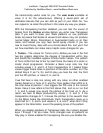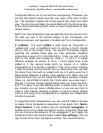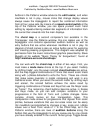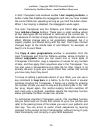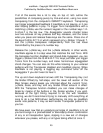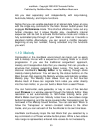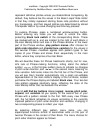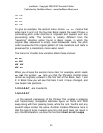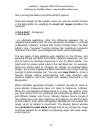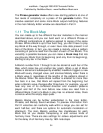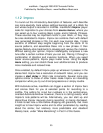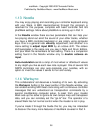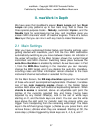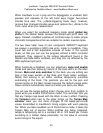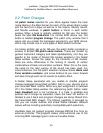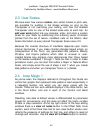maxWerk - Copyright 2000-2007 Amanda Pehlke
Published by RedMoon Music - www.RedMoon-Music.com
33
that is
among
the Basic Loop Note Editor's options.
Since we
brought
up the subject: when you use the similar function
in the Note Editor by
enabling
the invert alt.
loops
checkbox,
the
value set:
1-2-3-4-5-6-7
…changes
to
1-7-6-5-4-3-2
…on a
lternate
repetitions.
Note the
difference
between
this re-
mapped
value
pattern
and the one
previously
illustrated.
In
contrast
to
Melody's
"variation"
function
that inverts
chordal
tones, the Note
Editor’s play
"inversion"
function
follows the
traditional
musician's
definition
of the
term,
and
changes
the triadic
chord
expressed.
The two types of play
patterns
work
together
on the Phrase, and
because
Phrase and Block
information
is
stored
separately,
you can
edit by hand the
resulting
sequences
in the full Block display. You
might wish to
remove
some notes in the last Block bar, for
example.
Since any
further
edits to Phrases will
refresh
an
unlocked
Block
display, you should
engage
the Block lock switch and make finishing
touches
to Block displays last. You can use
copy block
to clone a
favorite
Phrase
before
experimenting
with new
direction
and
variation
patterns,
and then
repeat
any
needed
finish-work
in the
Block
editor.
When maxWerk
generates
Phrases, it
doesn't
provide
for value 8,
since Melody transposing does not need to
reference
(+)Notes.
While any
transposition-enabled
Block is in play, the
pattern
notes
you
hear
derive
from
the
combined
pitch-determining
data of Keys-
with-Offsets,
Scales, and Tonics. Melody displays have a
range
of
two octaves plus one step,
beginning
and
topping
out with the pitch
at Scale step 5. Even when
transposed,
Melodies
do not exceed this
range,
which by
default
is
maximized.
The Melody Sound window
has
constrain
to
scale
steps
settings that let you
narrow
the
range
of pitches allowed for all Blocks by
adjusting
upper
and lower wrap-
around
points.



